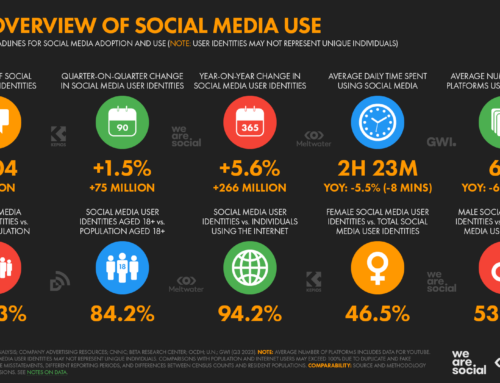Today’s guest post is by Dave Raley, Director of Digital Marketing at Masterworks. I met Dave at the Nonprofit Technology Conference in DC in March, where he took this awesome photo of a group of us on a night-time monument walk. I asked Dave to share some of his expertise on micro-engagement — all the little things you can do to engage your supporters with just a little time or effort.
~Kivi
A Guest Post by Dave Raley
Ever heard of micro-engagement? Maybe you haven’t, but I would be willing to bet that you’ve seen it in action.
Micro-engagement refers to the current trend towards “small.” In our overloaded and crazy lives, we engage with the world through micro bits of time and attention. In fundraising, people are giving very small amounts of money. The same trend is happening in advocacy, our social lives and more.
Let’s give it an official definition:
Micro-engagement — The practice of engaging constituents in communication or relationship through various forms that require only small portions of time, attention, money or other involvement.
Why micro-engagement matters
This is how your constituents and donors are increasingly living their lives. They are short on time and attention. If you are going to engage these people into the future, you need to understand the latest trends in the world of micro-engagement.
Six forms of micro-engagement
Let’s look at several different forms of micro-engagement, define each and see what they might mean for you specifically.
1) Micro-fundraising
The trend towards smaller gifts is not new, but is changing. Historically, we’ve found that $5 gifts in direct mail ultimately cost non-profits more than they are worth — they result in lower long-term-value donors, and it costs more to cultivate these low-dollar donors than they give.
But technology and scale are making micro-fundraising more promising and cost-effective than ever. Text2Give mobile donations of $5 or $10 are leading the way (though text-based giving is not without hurdles). We have a client who raised over $500,000 via text-based giving in the wake of the Haiti earthquake — primarily through free national-radio promotion.
Mobile apps continue to mature and enable other giving options. The mobile secure web is doing the same (example). New technologies powered by near field communications (NFC) are enabling platforms like Google Wallet to move us closer towards making payments via mobile commonplace.
2) Micro-volunteering
Traditional volunteering — coming to the office once a week, serving on the food line at the local shelter, etc. is difficult for large numbers of people who would give their time and talent if it could be on their terms.
Networks like Sparked (and apps too) allow people to volunteer wherever they want, whenever they want and in very small amounts of time.
Non-profits need to rethink how they engage volunteers and expand what they allow volunteers to do. Technology can enable all this in ways never before possible.
3) Micro-advocacy
Tools and technology like online petitions and virtual call center apps are making it easy to advocate for a cause. At an even more basic level, we all have seen friends ‘advocate’ for a cause online by updating their avatar with a ribbon or retweeting an advocacy message.
There’s value in the number of impressions and reach this type of advocacy drives. But the real value is in higher engagement of the person doing the advocating. People are more likely to increase their involvement with an organization after telling their friends about it.
4) Micro-connections
When people post via social media today, they are generally not targeting that message to anyone in particular. This creates dozens (or hundreds or thousands) of small personal-relationship connections that often the author is not aware of.
Non-profits are taking advantage of this new form of connection as well. For example, I love seeing a non-profit post a message on Facebook and seeing people comment very personal experiences and feelings in return. You can literally watch people becoming more bonded with an organization or cause.
5) Micro-blogging
The poster child for micro-blogging is Twitter. 140 characters at a time. But Facebook, Tumblr and others are also micro-blogging platforms.
As busy people, we may not have the time to read a non-profit’s full-length newsletter, but we will engage with a brief status update, a single picture or a short video. Micro-blogging enables non-profits to build relationships with constituents, one small interaction at a time.
6) Hyper-local (aka location-based or geosocial)
As with most new industries — location-based services (LBS) like Foursquare and Gowalla are just the early-stage pioneers. The masses don’t use them or find much utility for them, but over time they are paving the way to whole new forms of engagement based on location data. In fact, there are a growing number of people talking about how location based services and these other micro-engagement trends are creating what they call a “game layer” on top of the world — essentially, that the historical mechanics from the video games are manifesting themselves in our everyday lives.
So what’s a non-profit to do about micro-engagement?
1) Recognize that micro-engagement is a new cultural and social reality. It’s a core part of the world we live in.
2) Only bite off what you can chew. These forms of engagement are not equally important, and for your non-profit some of these may not make sense for you right now. But you should at least be aware of the trends so you know when to jump in.
3) Go and do it! Don’t let excuses stop you from diving in!
Dave is the Director of Digital Marketing at Masterworks — a marketing and development agency that works exclusively with faith-based nonprofits. He blogs and tweets and you can also reach him at draley@masterworks.com.







